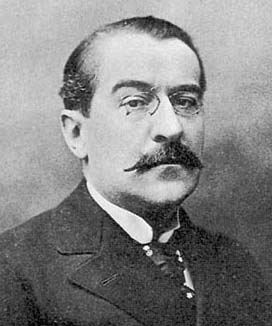Émile Picard facts for kids
Quick facts for kids
Émile Picard
FRS(For) FRSE
|
|
|---|---|
 |
|
| Born | 24 July 1856 |
| Died | 11 December 1941 (aged 85) Paris, France
|
| Nationality | French |
| Alma mater | École Normale Supérieure (Paris) |
| Known for | Picard functor Picard group Picard horn Picard modular group Picard modular surface Picard theorem Picard variety Picard–Lefschetz formula Picard–Lindelöf theorem Picard–Vessiot theory Picard–Fuchs equation Painlevé transcendents |
| Awards | ForMemRS (1909) Poncelet Prize (1886) |
| Scientific career | |
| Fields | Mathematics |
| Institutions | University of Paris École Centrale Paris |
| Thesis | Applications des complexes lineaires a l'etude des surfaces et des courbes gauches |
| Doctoral advisor | Gaston Darboux |
| Doctoral students | Sergei Bernstein Paul Dubreil Jacques Hadamard Gaston Julia Traian Lalescu Philippe Le Corbeiller Paul Painlevé Mihailo Petrović Simion Stoilow Ernest Vessiot Henri Villat André Weil Stanisław Zaremba |
Charles Émile Picard (born July 24, 1856 – died December 11, 1941) was an important French mathematician. He became a member of the Académie française in 1924. This is a very famous group of people who protect the French language.
Contents
A Life in Mathematics
Émile Picard was born in Paris, France, on July 24, 1856. He went to school at the Lycée Henri-IV and then studied mathematics at the École Normale Supérieure. This was a top school for future teachers and researchers.
Picard wrote many math papers, textbooks, and popular articles. These showed how widely interested he was in different math topics. He also showed how well he understood the math of his time.
Picard's Theorems
Picard is famous for two important ideas called Picard's little theorem and Picard's great theorem. These theorems are about special kinds of math functions. They explain that these functions can take almost any possible value. They might only miss one value at most.
Other Math Contributions
Picard also made big contributions to differential equations. These are equations that describe how things change. For example, they can describe how a ball moves or how heat spreads. He worked on Picard–Vessiot theory and Painlevé transcendents. He also introduced a type of symmetry group for these equations.
He also created the Picard group in the study of algebraic surfaces. These are like 3D shapes described by math equations. This group helps describe different curves on these surfaces. Picard was one of the first to use ideas from algebraic topology. This is a field that studies shapes using tools from algebra.
Applied Mathematics
Beyond pure math, Picard also helped with applied mathematics. This is about using math to solve real-world problems. He worked on theories for telegraphy (sending messages over long distances) and elasticity (how materials stretch and bend). All his collected writings fill four large books!
Teaching and Writing
Picard cared a lot about training new math, physics, and engineering students. He wrote a classic textbook on analysis. He also wrote one of the first textbooks about the theory of relativity. Picard also wrote biographies of many famous French mathematicians. One of these was his father-in-law, Charles Hermite.
Family Life
In 1881, Émile Picard married Marie. She was the daughter of the well-known mathematician Charles Hermite.
Works
- 1906 : (with Georges Simart) Theorie des Fonctions Algebrique de deux Variables Independente volume 2, via Internet Archive
See also
 In Spanish: Charles Émile Picard para niños
In Spanish: Charles Émile Picard para niños
- Émile Picard Medal
- Picard modular group
- Picard modular surface
- Picard horn

